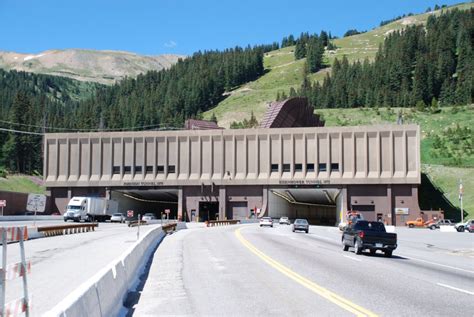Driving through the Eisenhower Tunnel on I-70 in Colorado is a common experience for travelers navigating the Rocky Mountains. However, the weather conditions and road closures in this area can be unpredictable, making it crucial to stay informed about the latest road conditions before embarking on your journey.

Current Road Conditions
To get the most up-to-date road conditions for the Eisenhower Tunnel, visit the Colorado Department of Transportation (CDOT) website. This website provides real-time updates on road closures, delays, and weather conditions, including:
- Current weather: Temperature, wind speed, and visibility
- Road conditions: Dry, wet, icy, or snowy
- Traffic information: Delays, accidents, and road work
- Webcams: Live views of the road conditions
Weather Conditions
The Eisenhower Tunnel is located at an elevation of over 11,000 feet, making it prone to extreme weather conditions. Snow, ice, and fog are common, especially during the winter months. According to the National Weather Service, the average annual snowfall in the area is over 300 inches.
Winter driving: During the winter, it is essential to be prepared for snow and ice on the road. Carry chains or snow tires in your vehicle, and allow extra time for your journey.
Summer driving: While the weather is generally milder in the summer, thunderstorms and hail are possible. Be aware of the weather forecast before you travel, and seek shelter if severe weather is approaching.
Closures and Delays
The Eisenhower Tunnel is occasionally closed due to weather conditions, accidents, or maintenance work. These closures can last for several hours or even days.
To stay informed about closures and delays, check the CDOT website or call the CDOT Traveler Information Line at (303) 639-1111.
Safety Tips
Driving through the Eisenhower Tunnel requires extra caution due to the high altitude and changing weather conditions. Here are some safety tips to keep in mind:
- Reduce speed: The speed limit in the tunnel is 45 mph. Obey the speed limit and be prepared to slow down further if conditions warrant.
- Use headlights: Headlights are required in the tunnel, even during the day.
- Stay alert: Pay attention to the road ahead and be prepared to react to changing conditions.
- Be aware of altitude: The high altitude can cause altitude sickness in some people. Symptoms include headache, nausea, and fatigue. If you experience any symptoms, take breaks as needed and drink plenty of fluids.
- Carry emergency supplies: In case of an emergency, carry a first-aid kit, food, water, and extra clothing in your vehicle.
Planning Your Trip
If you are planning to drive through the Eisenhower Tunnel, allow extra time for your journey and check the road conditions before you leave. Here are some additional tips for planning your trip:
- Check the weather forecast: Be aware of the weather conditions before you travel, and adjust your plans accordingly.
- Leave early: Give yourself plenty of time to reach your destination, especially during peak travel times.
- Stay informed: Monitor the CDOT website or call the CDOT Traveler Information Line for the latest updates on road conditions.
Frequently Asked Questions
Q: How long is the Eisenhower Tunnel?
A: The Eisenhower Tunnel is 1.7 miles long.
Q: What is the elevation of the Eisenhower Tunnel?
A: The Eisenhower Tunnel is located at an elevation of 11,158 feet.
Q: What is the speed limit in the Eisenhower Tunnel?
A: The speed limit in the Eisenhower Tunnel is 45 mph.
Q: Can I use my cell phone in the Eisenhower Tunnel?
A: Cell phone reception is limited in the Eisenhower Tunnel. However, there are emergency call boxes located throughout the tunnel.
Q: Are there any tolls to drive through the Eisenhower Tunnel?
A: No, there are no tolls to drive through the Eisenhower Tunnel.
Q: What should I do if I get stuck in the Eisenhower Tunnel?
A: If you get stuck in the Eisenhower Tunnel, stay calm and follow the instructions of the emergency personnel. There are emergency call boxes located throughout the tunnel that you can use to contact help.
Additional Resources:
